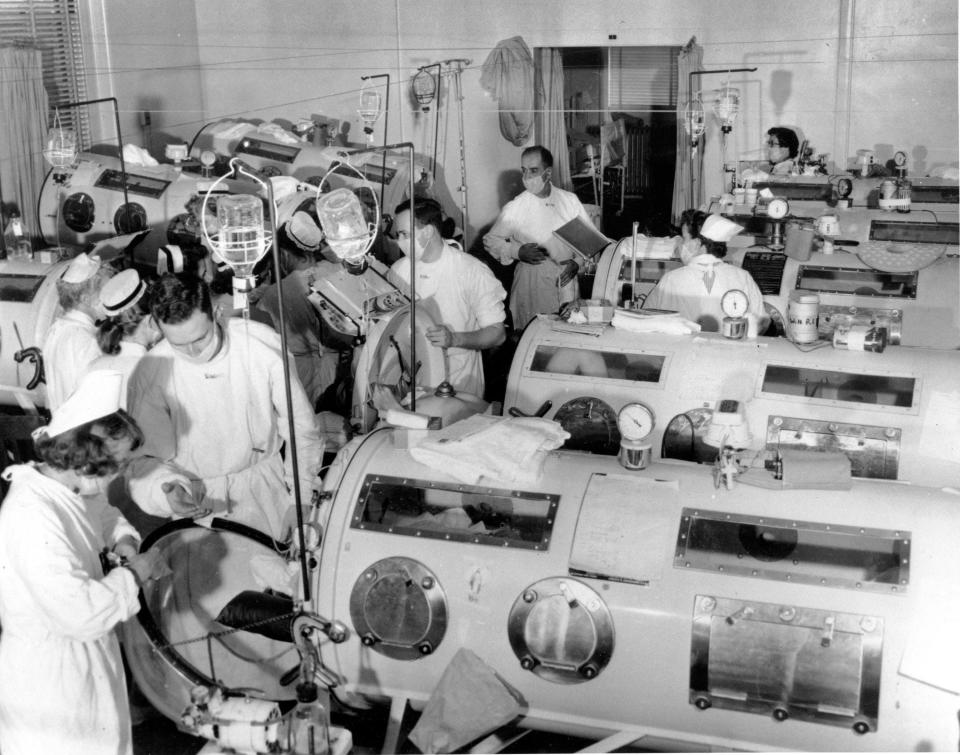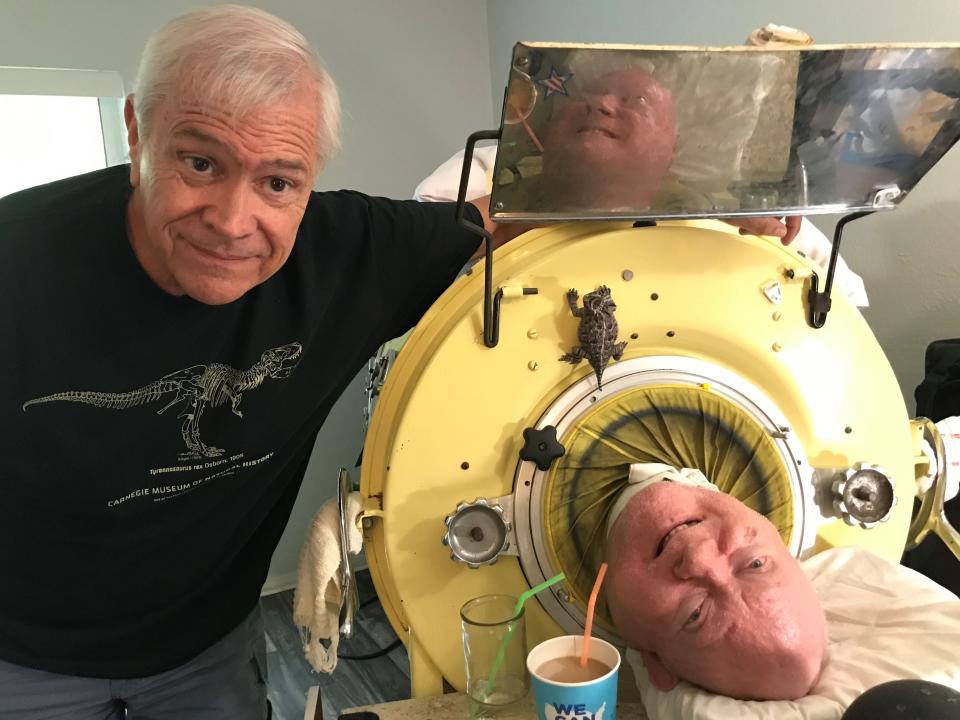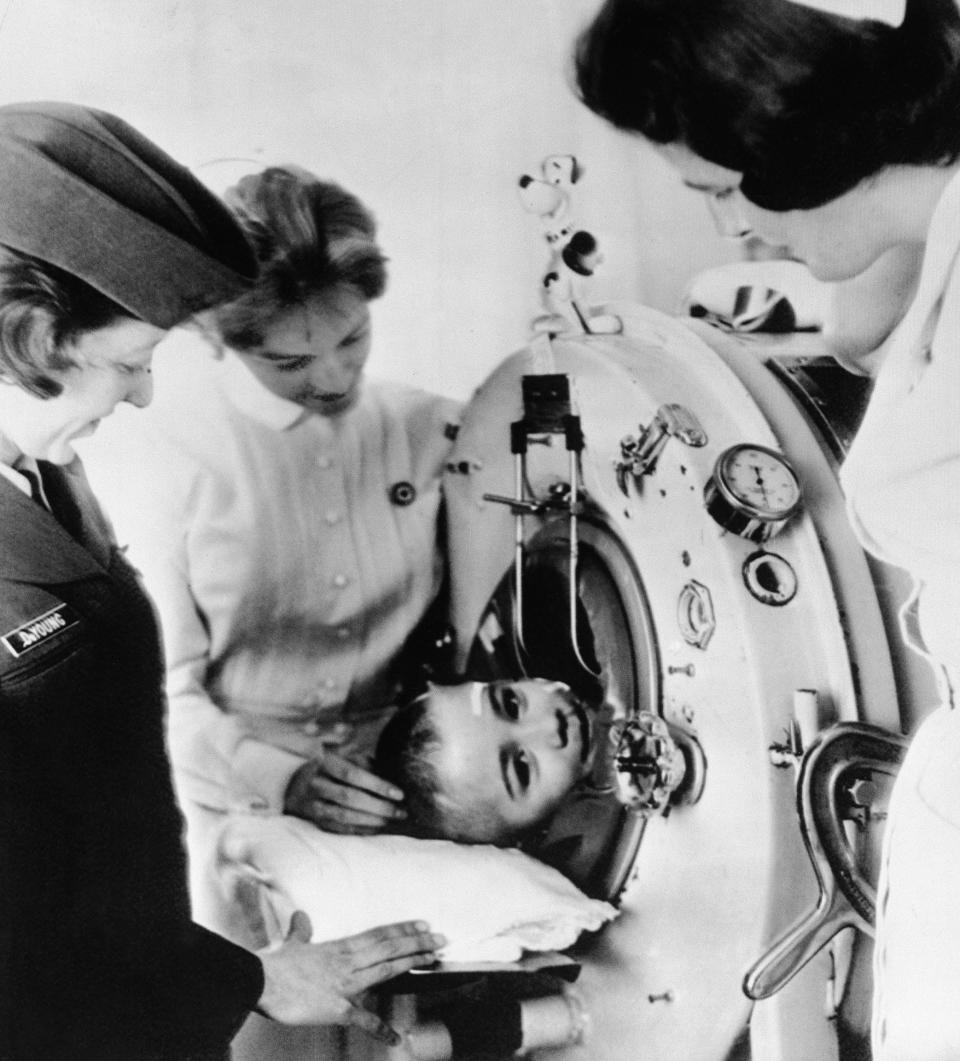Paul Alexander spent seven decades in an iron lung. Polio couldn’t take his hope
He had dreams of flying kites and playing baseball, the imaginations of a man whose physical abilities had been interrupted as a young boy.
What could Paul Alexander, who earned a law degree, operated a law practice and in 2020, published an autobiography, have become had he not faced the incredible challenges of polio? That’s the question on the minds of some who knew the Dallas resident, one of the last surviving people in the U.S. to depend on an iron lung.
“That kind of drive, of dig your nails in and hang on regardless, that’s something that comes out of your internals,” said friend William Dendy, a retired financial consultant in DeSoto, Texas, who occasionally recruited Alexander to speak at Rotary Club meetings. “You can’t teach that.”
Alexander, who lived the vast majority of his life in an iron lung after contracting polio as a child in 1952, died Monday in Dallas. He was 78.
Alexander earned his bachelor’s and law degrees at the University of Texas at Austin. He preached the importance of vaccines and was passionate about eradicating polio.
In recent years Alexander had risen to prominence on social media, particularly on TikTok, where he was known as @ironlungman, amassing over 300,000 followers. He posted videos and answered questions from commenters asking about his life living in the iron lung.
"I have goals and dreams of doing some more things before I go visit someplace, and I plan to do and accomplish those goals with my friends," Alexander said in his most popular video, which has over 56 million views. "I want to talk to the world about polio and the millions of children not protected against polio. They have to be before there's another epidemic."
Health failed after recent bout with COVID-19
In the most recent video posted to his account on Feb. 26, a man identified only as Lincoln said he runs Alexander's social media, noting Alexander had been taken to the emergency room after being diagnosed with COVID-19.
While Alexander was able to use the hospital's iron lung and return home, he was said to still be weak, confused and struggling to eat and hydrate.
Linda Elliott, a member of the Rotary E-Club of North Texas who lives in Irving, said she brought Alexander chicken tamales, one of his favorite dishes, after hearing he had lost his appetite. He ate two, she said.
Elliott recalled him as optimistic and playful.
“We’d razz each other,” she said. “I’d say, ‘If you don’t behave, I’m going to leave.’ He was just an inspiration to everybody."
A frightening epidemic of decades past
These days, polio is mostly a distant memory in the U.S., but for those who grew up in the 1950s, it was frightening: At its peak, nearly 2,000 people died annually from the disease while another 16,000 on average were left paralyzed by its assault on the body's central nervous system.
Harriet Zaidman, a Canadian writer and children’s novelist in Winnipeg, interviewed Alexander as she put together “Second Chances,” a young adult novel set during the epidemic, ultimately naming a character after him. The book won Canada’s Geoffrey Bilson Award for Historical Fiction for Young People in 2022.
“He told me all about his life and the challenges he faced, which were incredible,” she said.
Alexander told her how, at age 6, he was placed in a giant ward, intubated and placed under a tent for 18 months with caregivers he recalled as often hostile and indifferent.
“Whenever they lifted the tent, there was a different child beside him,” Zaidman said he told her. “His previous neighbor had died.”

Ultimately, Alexander’s longevity got him sent home with his iron lung, where he learned to prosper.
'Frog-breathing' technique helped Alexander prosper
Dendy said Alexander could breathe for short periods outside the machine through a technique called “frog-breathing” that he had learned in high school from a physical therapist, Dendy said.
“He would gulp mouthfuls of air and force them into his lungs,” Dendy said. “Then the pressure buildup would eventually cause him to exhale. He had to consciously do that the entire time he was out of his iron lung.”
That’s how Alexander was able to attend high school and, eventually, earn degrees at UT-Austin, despite an inauspicious start: Alexander was abandoned by caregivers in his dorm room, where he went without food, water and care for several days, said Norman DePaul Brown, a career nurse who would take Alexander under his watch.
Alexander, Brown said, was “the most remarkable patient I ever had.”
The two ultimately bonded and became lifelong pals, a product of the kind of intimate and intense care that Alexander required.
It was Brown who shared Alexander's dreams of baseball and who helped Alexander write his memoir, “Three Minutes for a Dog,” a title referring to the breathing technique Alexander was motivated to learn as a boy in exchange for a puppy.
Alexander, he said, was extremely bright and remarkably adept at controlling his environment despite being wholly dependent on others for his care. Everything, from being fed or washed to having his teeth brushed, had to be physically done by someone else.

It wasn’t just his breathing technique that kept Alexander alive, friends say; it was his resolve and desire to live, learn and experience things despite his condition. He learned to endear himself to people and get them to do what he needed to survive and endure.
“He was able to coerce, convince and incorporate all kinds of people into meeting his needs,” said Brown, who now lives in Little Rock, Arkansas.
Alexander was gregarious and positive, Brown said.
“You don’t live 70 years in an iron lung and not have a strong will to live,” Brown said.
Zaidman said the character she named after Alexander is not the child who is stricken by polio and has a potential hockey career cut short; instead, it’s his friend who skates away with a possible National Hockey League future.
“I wanted to give Paul a reality he might have imagined before he got sick,” she said.
The two talked regularly even after she completed the novel, she said, describing him as “an example of strength and determination.”
“He was dismayed at the attitudes people had developed in opposition to vaccines and to science,” Zaidman said. “I feel so lucky to have met Paul.”
'He was always looking beyond'
In the last decade, Alexander occasionally spoke at meetings of Rotary International, a global organization that has long fought to eradicate polio worldwide. Dendy reached out to Alexander just after being named governor of the Rotary’s Dallas-area district and convinced him to make the nearly 300-mile trip south to Kerrville, near San Antonio, to speak to members there in 2015.
“We put him in a portable setup and put his iron lung in a trailer and hauled it down,” Dendy remembered.

Dendy said Alexander would call him late at night to discuss his latest ideas. “He hardly ever slept,” he said. “He really wanted to go to France, and I had to sit down and walk him through the logistics and compare that to what we had experienced taking him to Kerrville. He was always looking beyond.”
But what most struck Dendy, he said, was Alexander’s will to live.
“Most of those kids, when they got into that situation where it’s a life sentence, gave up and died,” Dendy said. “And he didn’t. That sheer determination is something I will always hold as an inspiration.”
This article originally appeared on USA TODAY: Paul Alexander, who lived in iron lung for most of life, dies at 78

